Mold in breast pump tubing is a common issue that many breastfeeding mothers face. Mold can grow in the tubing of breast pumps due to the accumulation of moisture, milk, and other organic matter. This can be a serious health concern for both the mother and the baby, as mold can cause respiratory problems and other health issues.
Understanding mold in breast pump tubing is important for breastfeeding mothers to ensure the safety of their baby. There are several causes of mold in breast pump tubing, including improper cleaning and maintenance, using the wrong breast pump model, and storing breast milk improperly. It is important to be aware of the signs of mold in breast pump tubing, such as a foul odor, discoloration, and visible mold growth, in order to take the necessary steps to prevent it.
Key Takeaways
- Breast pump tubing can develop mold due to moisture and organic matter accumulation.
- Mold in breast pump tubing can cause serious health concerns for both the mother and the baby.
- Proper cleaning, maintenance, and storage of breast pump tubing can help prevent mold growth.
Understanding Mold in Breast Pump Tubing
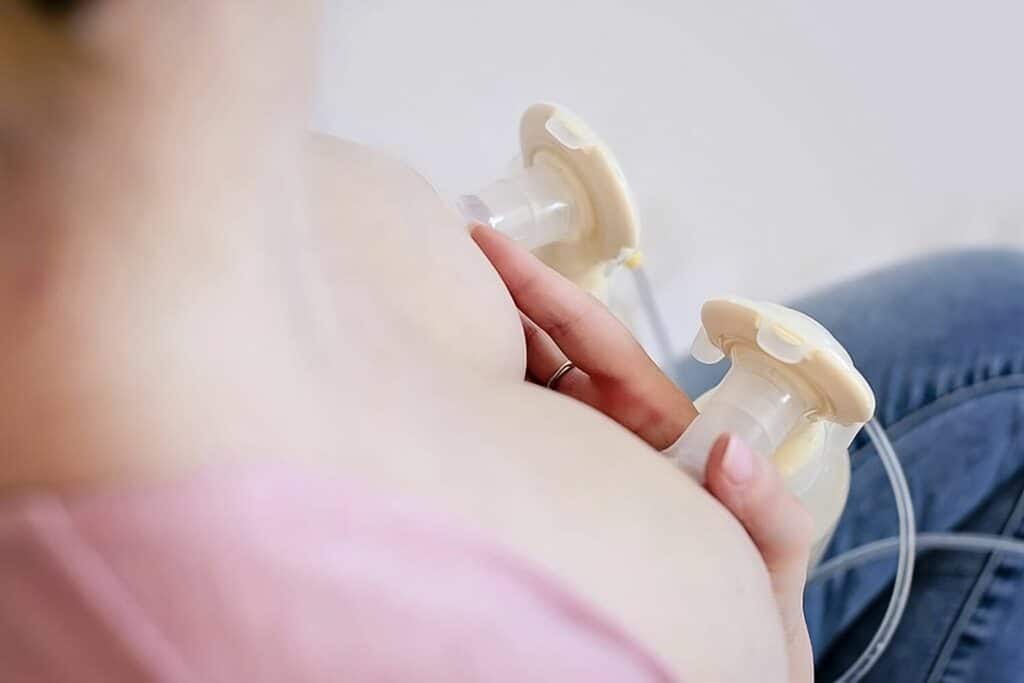
Breast pump tubing can be a breeding ground for mold. Mold is a type of fungus that thrives in moist environments. Breast pump tubing can be a perfect environment for mold to grow due to the presence of moisture and condensation.
Mold spores are present in the air, and they can easily settle in the tubing of a breast pump. When moisture is present in the tubing, mold spores can grow and multiply. The mold can then release spores into the air, which can be harmful to both the mother and baby.
Moisture can accumulate in breast pump tubing due to a variety of reasons. For example, if a mother does not properly clean and dry the tubing after each use, moisture can accumulate and create an environment for mold to grow. Additionally, if the tubing is not stored in a dry place, moisture can accumulate and create an environment for mold to grow.
It is important to understand the risks associated with mold in breast pump tubing. Mold can cause respiratory problems, such as asthma and allergies. It can also cause infections, such as thrush. Therefore, it is important to take steps to prevent mold growth in breast pump tubing.
One way to prevent mold growth is to properly clean and dry the tubing after each use. This includes washing the tubing with soap and water, rinsing it thoroughly, and allowing it to air dry completely. Additionally, storing the tubing in a dry place can help prevent mold growth.
In conclusion, mold growth in breast pump tubing can be a serious problem. It is important to understand the risks associated with mold and take steps to prevent its growth. Proper cleaning and drying of the tubing, as well as storing it in a dry place, can help prevent mold growth and ensure the safety of both the mother and baby.
Causes of Mold in Breast Pump Tubing
Mold in breast pump tubing can be a frustrating problem for breastfeeding mothers. It can lead to contamination of breast milk and pose a health risk to both the mother and the baby. Understanding the causes of mold in breast pump tubing can help prevent the growth of mold and keep breast milk safe.
Mold grows in areas where there is moisture and organic material for it to feed on. Breast pump tubing provides an ideal environment for mold growth because it is warm, moist, and contains milk residue. Mold can also grow in breast pump tubing if it is not cleaned and dried properly after each use.
One of the main causes of mold in breast pump tubing is the use of an open system breast pump. In an open system breast pump, milk can flow back into the tubing and create a moist environment for mold to grow. Using a backflow protector can help prevent this problem.
Another cause of mold in breast pump tubing is the use of a closed system breast pump that is not cleaned properly. Milk residue can accumulate in the tubing and provide a food source for mold to grow. It is important to clean and dry all parts of the breast pump thoroughly after each use.
In summary, mold in breast pump tubing is caused by moisture, milk residue, and the use of an open system breast pump without a backflow protector. Proper cleaning and drying of breast pump parts can help prevent the growth of mold and keep breast milk safe for the baby.
Health Implications
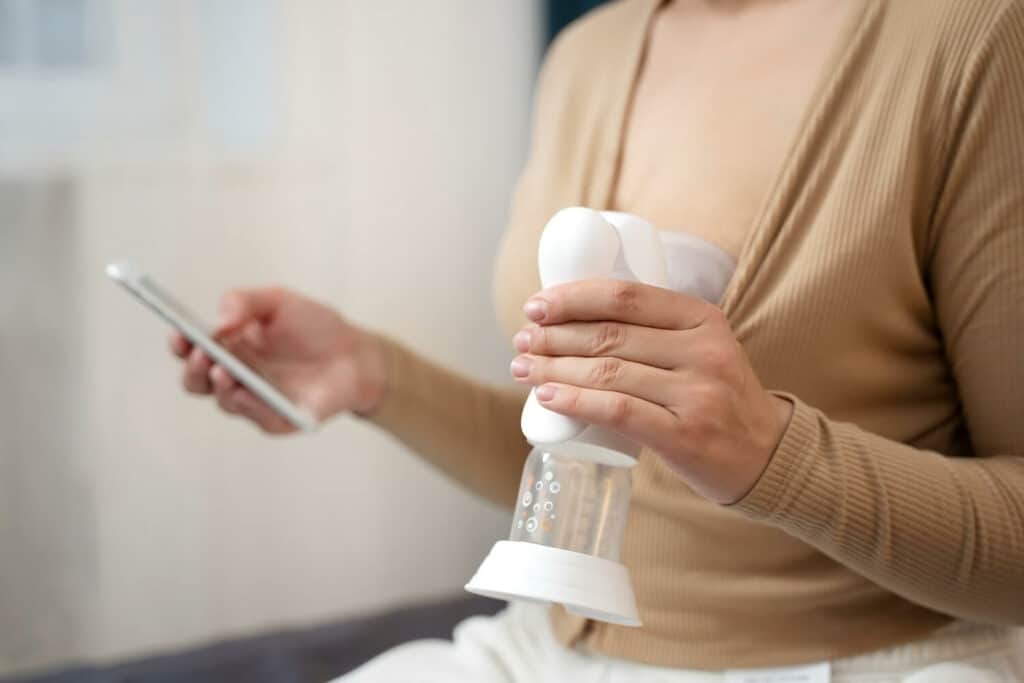
The presence of mold in breast pump tubing can have serious health implications for both the mother and the baby. Mold is a type of fungus that can grow in warm and moist environments, such as breast pump tubing that is not properly cleaned and dried.
When a mother uses a breast pump with moldy tubing, the mold spores can contaminate the breast milk and enter the baby’s digestive system. This can lead to a range of health issues, including respiratory problems, allergic reactions, and gastrointestinal distress.
In addition to the health risks for the baby, mold in breast pump tubing can also have negative effects on the mother’s health. Exposure to mold spores can cause respiratory issues, skin irritation, and other allergic reactions. For mothers with a weakened immune system, the health risks can be even greater.
It is important for mothers to take steps to prevent mold growth in breast pump tubing. This includes cleaning and sterilizing the tubing after each use, allowing it to dry completely before storing, and replacing the tubing regularly. If mold is detected in the tubing, it should be immediately replaced and the breast pump should be thoroughly cleaned and sterilized.
Overall, the presence of mold in breast pump tubing can have serious health implications for both the mother and the baby. It is important for mothers to take proactive steps to prevent mold growth and ensure the safety and health of their child.
Signs of Mold in Breast Pump Tubing
Breast pump tubing is an essential component of a breast pump that helps to extract milk from the breast and transfer it to the collection bottle. However, if the tubing is not cleaned and maintained properly, it can become a breeding ground for mold, which can be harmful to both the mother and the baby. Here are some signs that indicate that there might be mold in the breast pump tubing:
- Visible Mold: If there is visible mold growth on the tubing, it is a clear indication that the tubing needs to be replaced immediately. Mold can be black, green, or white in color and can appear as spots or patches on the tubing.
- Foul Smell: If the breast pump tubing emits a foul odor, it is a sign that there might be mold or bacteria present in the tubing. The smell can be musty, sour, or unpleasant.
- Discoloration: If the breast pump tubing appears discolored or has a cloudy appearance, it is an indication that there might be mold or dirt buildup inside the tubing.
- Breast Milk Quality: If the breast milk appears to be contaminated or has an off taste or smell, it could be due to mold or bacteria present in the breast pump tubing.
It is important to note that mold can be harmful to both the mother and the baby. Mold can cause respiratory problems, allergies, and other health issues. Therefore, it is crucial to clean and maintain breast pump tubing regularly to prevent mold growth.
Prevention and Maintenance
Preventing mold growth in breast pump tubing is essential for the health and safety of both the mother and baby. Proper maintenance and cleaning of the breast pump can prevent mold growth and ensure that the milk is safe for consumption.
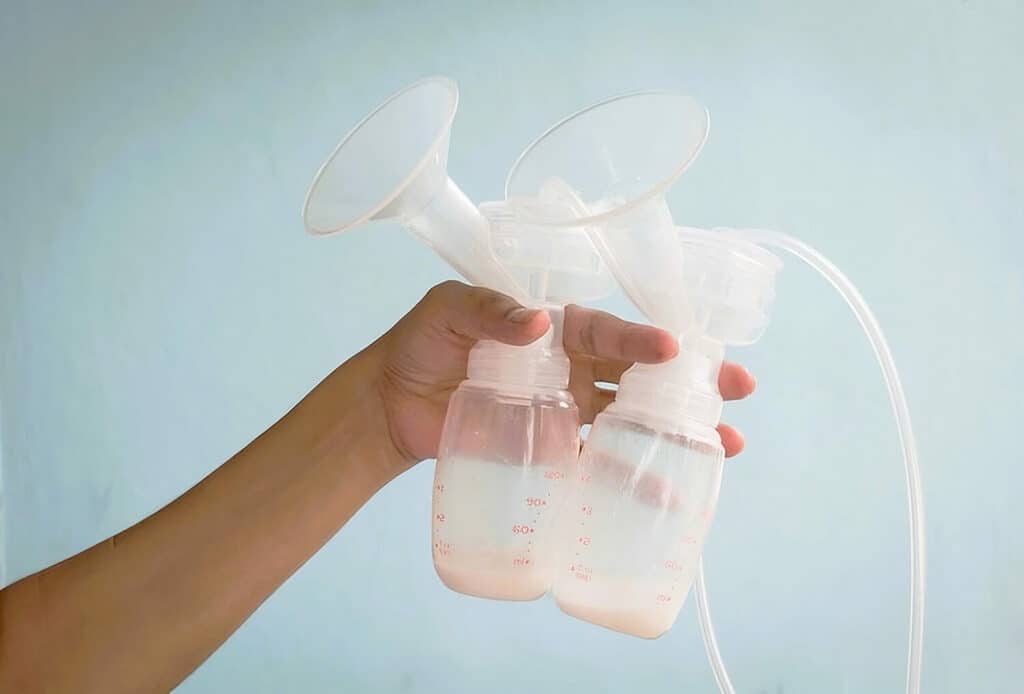
1. Cleaning and Pumping
Cleaning the breast pump after every use is crucial to prevent mold growth. The mother should disassemble the pump and clean all the parts that come in contact with the milk. The tubing should be washed with warm, soapy water and rinsed thoroughly. It is essential to ensure that there is no residual milk left in the tubing, which can lead to mold growth.
Pumping milk into a closed system can also prevent mold growth. A closed system breast pump prevents milk from coming into contact with the tubing, reducing the chances of mold growth.
2. Drying and Sanitizing
After cleaning the breast pump, it is essential to dry all the parts thoroughly before storing them. Moisture can promote mold growth, and therefore, all parts should be completely dry before storing them in a clean, dry place.
Sanitizing the breast pump regularly can also prevent mold growth. The mother can use a steam bag or a sanitizer to disinfect the breast pump parts. Sanitizing the breast pump parts once a day can help prevent mold growth.
3. Maintenance
Regular maintenance of the breast pump can prevent mold growth and ensure that it is working correctly. The mother should inspect the breast pump regularly for any signs of wear and tear. Any damaged parts should be replaced immediately.
In conclusion, preventing mold growth in breast pump tubing is essential for the health and safety of both the mother and baby. Proper cleaning, pumping, drying, and sanitizing of the breast pump can prevent mold growth and ensure that the milk is safe for consumption. Regular maintenance of the breast pump can also prevent mold growth and ensure that it is working correctly.
Cleaning Techniques
Cleaning breast pump tubing is essential to prevent the growth of mold and bacteria. Here are some effective cleaning techniques to keep your breast pump tubing clean:
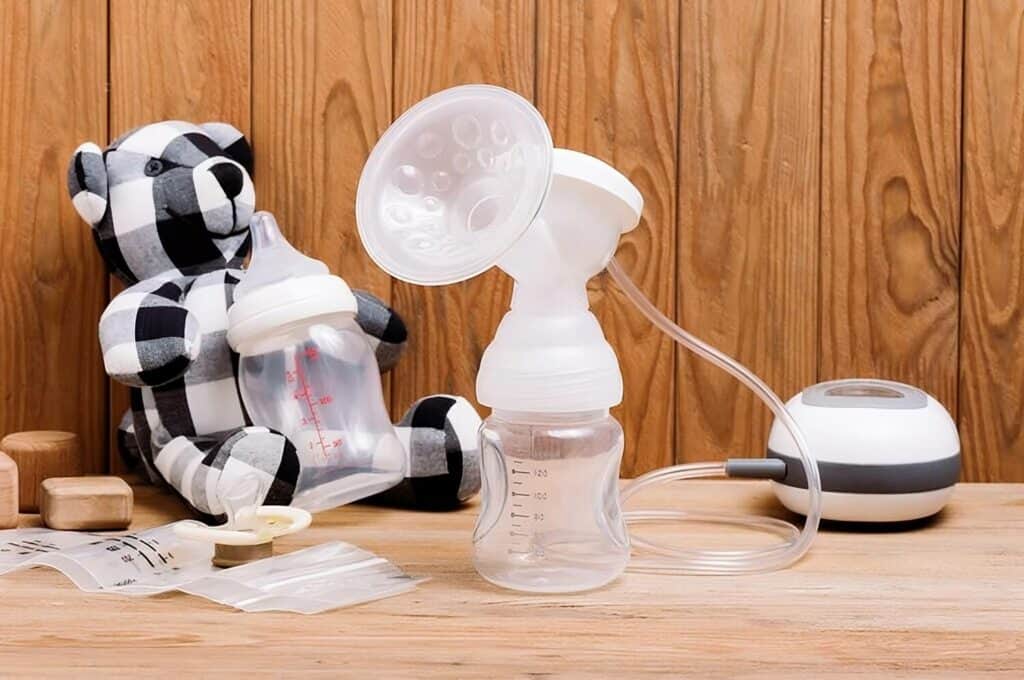
1. Clean Pump Parts
Before cleaning the tubing, it is important to clean the pump parts first. Disassemble the pump parts and wash them in warm soapy water. Use a bottle brush to scrub the parts thoroughly. Rinse the parts with clean water and dry them with a paper towel or dish towel.
2. Cleaning the Tubing
After cleaning the pump parts, it is time to clean the tubing. The tubing can be washed in warm soapy water or in a dishwasher. If washing in a dishwasher, make sure to place the tubing in the top rack. It is important to avoid using hot water or harsh chemicals to clean the tubing, as this can damage the material.
3. Air-Dry
After cleaning the tubing, it is important to let it air-dry completely before using it again. Hang the tubing on a drying rack or lay it flat on a clean surface. Do not use a dish towel to dry the tubing, as this can introduce bacteria.
4. Sterilizing
In addition to cleaning, it is recommended to sterilize breast pump parts and tubing at least once a day. This can be done by boiling the parts and tubing in water for five minutes or by using a sterilizing machine. It is important to follow the manufacturer’s instructions for sterilizing the pump parts and tubing.
By following these cleaning techniques, you can ensure that your breast pump tubing is clean and safe to use for you and your baby.
Sanitization Methods
Proper sanitization of breast pump tubing is crucial to prevent mold growth and protect the health of both the mother and baby. There are several methods for sanitizing breast pump tubing, including boiling, steam, and sterilization.
Boiling is a simple and effective method for sanitizing breast pump tubing. To boil breast pump tubing, first, disassemble the pump and remove any milk residue. Then, place the tubing in a pot of boiling water and let it boil for at least five minutes. After boiling, remove the tubing from the water and let it air dry.
Steam is another effective method for sanitizing breast pump tubing. To steam breast pump tubing, first, disassemble the pump and remove any milk residue. Then, place the tubing in a steam sterilizer and run the sterilizer for the recommended time. After sterilization, remove the tubing from the sterilizer and let it air dry.
Sterilization is the most thorough method for sanitizing breast pump tubing. To sterilize breast pump tubing, first, disassemble the pump and remove any milk residue. Then, place the tubing in a sterilization pouch and run it through a sterilization cycle in an autoclave. After sterilization, remove the tubing from the pouch and let it air dry.
It is important to note that boiling water alone is not sufficient for sanitizing breast pump tubing. Boiling water may kill some bacteria, but it will not kill mold spores or other harmful microorganisms. Therefore, it is recommended to use one of the above methods for sanitizing breast pump tubing.
In conclusion, proper sanitization of breast pump tubing is crucial for preventing mold growth and ensuring the health of both the mother and baby. Boiling, steam, and sterilization are effective methods for sanitizing breast pump tubing, and each method has its own advantages and disadvantages. It is important to choose the method that works best for you and to follow the manufacturer’s instructions for proper use and maintenance of your breast pump.
When to Replace Tubing
Breast pump tubing is an essential part of the breast pump that transfers milk from the breast shields to the collection container. Over time, tubing can wear out, become damaged, or develop mold. It is important to replace tubing when it is no longer functioning correctly to ensure the safe and efficient expression of breast milk.
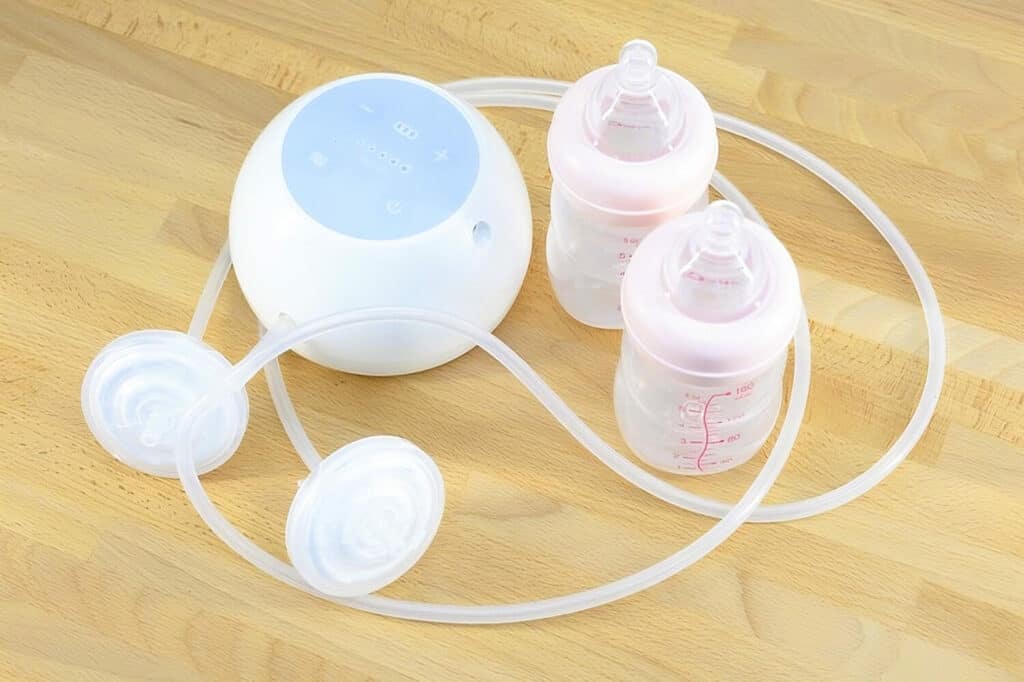
Replacements
Breast pump tubing should be replaced every three months or sooner if it becomes damaged or contaminated. It is essential to follow the manufacturer’s instructions for replacing tubing, as some breast pumps may require specific types of tubing.
When purchasing replacement tubing, it is important to ensure that it is compatible with the breast pump model and brand. Using non-compatible tubing can result in poor suction, which can lead to decreased milk production and discomfort.
Mold in Breast Pump Tubing
Mold can grow in breast pump tubing, which can be harmful to both the mother and the baby. Mold can cause respiratory problems, allergies, and infections. It is essential to check the tubing regularly for mold growth and to replace it immediately if mold is present.
Signs of mold in breast pump tubing include:
- Discoloration
- Foul odor
- Visible spots or growths
It is important to clean breast pump tubing after each use to prevent mold growth. If mold is present, the tubing should be replaced immediately, and the breast pump should be thoroughly cleaned and disinfected.
In conclusion, breast pump tubing should be replaced every three months or sooner if it becomes damaged or contaminated. Mold growth in breast pump tubing can be harmful, and it is essential to replace tubing immediately if mold is present. Regular cleaning and maintenance can help prevent mold growth and ensure the safe and efficient expression of breast milk.
Consulting a Professional
If a mother is concerned about mold in her breast pump tubing, it is recommended that she consult with a lactation consultant, pediatrician, or hospital for guidance. These professionals can provide expert advice on how to properly clean and maintain breast pump equipment, and can also help mothers identify the presence of mold in their tubing.
A lactation consultant can offer guidance on the proper cleaning and sterilization of breast pump equipment, as well as tips on how to prevent mold growth. They can also provide support and advice on breastfeeding in general, and can help mothers troubleshoot any issues they may be experiencing with their breast pump.
A pediatrician can help mothers identify any health concerns related to mold exposure in breast pump tubing, and can provide guidance on how to prevent mold growth. They can also provide advice on how to safely dispose of any contaminated breast milk.
If a mother is concerned that her breast pump tubing may be contaminated with mold, she can also contact her hospital for guidance. Hospitals may have protocols in place for dealing with mold in breast pump equipment, and can provide guidance on how to properly clean and sanitize the equipment.
Overall, consulting with a professional can help mothers ensure that their breast pump equipment is properly cleaned and maintained, and can help prevent the growth of mold.
Breast Pump Models and Tubing
Breast pumps come in different models, shapes, and sizes, but they all have one thing in common: tubing. Tubing is a crucial component of a breast pump as it connects the flange or flanges to the motor, allowing milk to flow from the breast to the collection container.
There are two types of breast pumps: open system and closed system. Open system breast pumps have tubing that is exposed to air, while closed system breast pumps have a barrier that prevents milk and air from entering the tubing. Closed system breast pumps are considered more hygienic as they prevent mold growth in the tubing.
Medela is a popular brand that offers a variety of breast pump models, including the Pump In Style, Freestyle, Symphony, and Sonata. Medela tubing is designed to fit these models and is available for purchase separately. It is recommended to replace the tubing every three months or sooner if there are signs of wear and tear.
In addition to tubing, breast pumps also have flanges and valves. Flanges are the funnel-shaped parts that fit over the breast, while valves control the suction and release of milk. It is important to clean and sanitize all parts of the breast pump, including tubing, flanges, and valves, after each use to prevent the growth of bacteria and mold.
Overall, understanding the different breast pump models and their tubing is important for maintaining proper hygiene and ensuring optimal milk expression.
Storing Breast Milk Safely
Storing breast milk safely is crucial to ensure that the milk is free from contamination and safe for the baby to consume. Here are some tips on how to store breast milk safely:

Choosing the Right Containers
When storing breast milk, it is important to use containers that are specifically designed for breast milk storage. These containers are made of materials that are safe for storing breast milk and are free from harmful chemicals. Containers that are commonly used for breast milk storage include:
- Breast milk bags
- Glass bottles
- Hard plastic containers
It is important to label the containers with the date and time of expression to ensure that the oldest milk is used first.
Freezing Breast Milk
Breast milk can be stored in the freezer for up to 6 months. When freezing breast milk, it is important to:
- Use containers that are specifically designed for breast milk storage
- Leave some space at the top of the container as breast milk expands when frozen
- Label the containers with the date and time of expression
It is important to note that freezing breast milk can cause a loss of some of the milk’s immune-boosting properties.
Thawing Breast Milk
When thawing frozen breast milk, it is important to:
- Thaw the oldest milk first
- Thaw breast milk in the refrigerator or by placing the container in a bowl of warm water
- Do not thaw breast milk in the microwave as this can create hot spots and destroy some of the milk’s nutrients
Using Formula
If breast milk is not available, formula can be used as an alternative. It is important to follow the manufacturer’s instructions when preparing formula and to use clean bottles and utensils.
In summary, storing breast milk safely is crucial to ensure that the milk is free from contamination and safe for the baby to consume. By choosing the right containers, freezing breast milk correctly, and following the proper thawing procedures, parents can ensure that their baby receives safe and nutritious breast milk.
Related post: Signs Relactation is Working
Frequently Asked Questions
What is the best way to clean breast pump tubing?
The best way to clean breast pump tubing is to wash it with warm soapy water after each use. Make sure to rinse the tubing thoroughly with clean water and hang it to air dry. Avoid using harsh chemicals or abrasive cleaners, as they can damage the tubing.
How often should breast pump tubing be replaced?
Breast pump tubing should be replaced every 3-6 months or as recommended by the manufacturer. If the tubing becomes discolored, cracked, or damaged, it should be replaced immediately.
Is it safe to use breast pump tubing with white spots?
No, it is not safe to use breast pump tubing with white spots. White spots are a sign of mold growth, which can be harmful to both the mother and baby. The tubing should be replaced immediately if mold is present.
What are the risks of mold in breast pump tubing?
Mold in breast pump tubing can cause respiratory problems, allergic reactions, and infections in both the mother and baby. It can also contaminate breast milk, making it unsafe for consumption.
How can I prevent mold from growing in my breast pump tubing?
To prevent mold from growing in breast pump tubing, make sure to clean and dry the tubing thoroughly after each use. Store the tubing in a clean, dry place and avoid leaving it in damp or humid areas. Consider using a breast pump with a closed system, which can help prevent mold growth.
Can I sterilize breast pump tubing in the dishwasher?
No, breast pump tubing should not be sterilized in the dishwasher. High temperatures and harsh detergents can damage the tubing. Instead, wash the tubing by hand with warm soapy water and air dry.
https://www.youtube.com/watch?v=tPyUUYWDXjw

Iesha is a loving mother of 2 beautiful children. She’s an active parent who enjoys indoor and outdoor adventures with her family. Her mission is to share practical and realistic parenting advice to help the parenting community becoming stronger.
